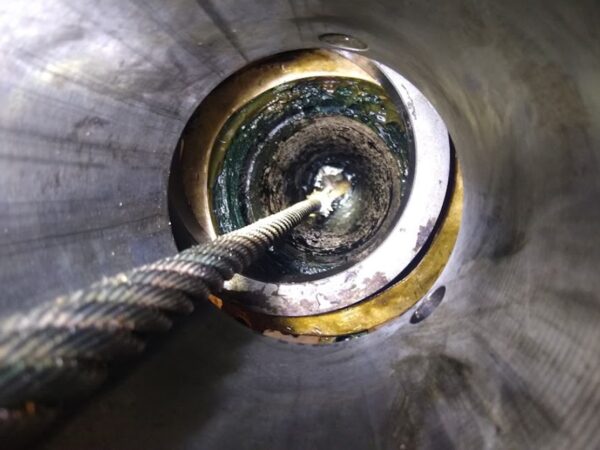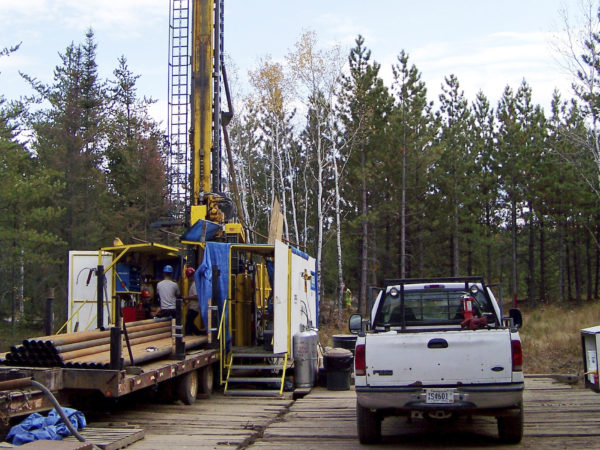
By Izzy Ross, Interlochen Public Radio
This coverage is made possible through a partnership with IPR and Grist, a nonprofit independent media organization dedicated to telling stories of climate solutions and a just future.
Most trees in this patch of forest had yellow leaves. Some slowly drifted down, landing on the North Country Trail about seven miles from the village of Buckley.
A short walk led to a clearing on the edge of a cliff: the High Rollaway Observation Deck. Below, trees stretched to the horizon. Many were deciduous, with colors that ranged from pale yellow to bright orange to deep red.
“Today, I’m noticing the oaks. All of the red oaks,” said Tammy Saul, who was there with her husband Rob. “Last week we were out and it was the maples, and this week it’s the red oaks that are just amazing.”
The Sauls are from Elsie in central Michigan. They were Up North on this mid-October afternoon, looking at the Manistee River some 200 feet below. The trees were as colorful as ever, visible for 15 miles from the observation deck.
Autumn leaves are a big part of the economy. Across the country, states bring in billions of dollars in fall tourism each year, and Michigan sees a lot of leaf-peeping tourism.
Tammy is one of those foliage enthusiasts. That fall scenery is her favorite thing about the season.
“We thought this was not going to be a great year for leaves,” she said. “This is one of the best years — (M-115) between Cadillac and Mesick is just incredible.” Rob agreed that it “turned out to be gorgeous.”
Several things determine what kind of fall we see. Daylight, temperature and precipitation all influence when leaves change, how bright they are and how long they last. And a rapidly changing climate is making it harder to predict.
Daylight is the most stable factor in the cycle because it stays the same from year to year.
“As there’s less sunlight available, tree leaves are not doing as much photosynthesizing sunlight into energy,” said Maddy Baroli, who works at the Northern Institute of Applied Climate Science and is based in Traverse City. “They really reduce the amount of chlorophyll that they’re producing.”
Chlorophyll is the pigment that gives leaves their green color and helps trees turn light into energy. In the fall, as the days get shorter and the temperature drops, trees slow photosynthesis and produce less chlorophyll, storing nutrients to boost metabolism during the winter.
That green color recedes, revealing yellow, orange and red pigments, called carotenoids, xanthophylls and anthocyanins. Eventually, the leaves fall.
As the climate has heated up, the growing season in the Northern Hemisphere has gotten longer, and autumn has gotten shorter.
In northern Michigan, autumns have warmed by an average of around 3 degrees Fahrenheit since 1970, according to the nonprofit Climate Central. That’s a little higher than the national average.
“Those warmer temperatures that we are experiencing, and these longer growing seasons, are sending a bit of a mixed message in terms of what compounds are being produced in the leaves at this time of year,” Baroli said.
Cool nights and sunny days can mean brighter colors, and moist soil and summer rain can amp up colors. Meanwhile, warm temperatures can dull leaves and delay the peak season. Drought and heat stress can make leaves drop before they change color, but too much rain could also disrupt the annual cycle.
“With climate change, we can be both concerned about drought and extended dry periods, as well as too much rain delivered in really heavy downpour events,” she said.
Scientists expect warmer temperatures to continue to push the peak color season back, though the timing varies from year to year.
Baroli said her organization is working with tribes, land management groups and individuals to tackle research on fall foliage together, bringing on-the-ground observations to broader conversations with other land managers.
“The point of all of that is so that we can then talk about how might we adapt and be proactive about what some of those impacts are,” she said.
For now, people like Rob and Tammy Saul are still enjoying northern Michigan’s autumns. The High Rollaway Observation Deck is one stop on their off-road vehicle trail ride — they’ve been taking trips like this for more than 20 years.
“Just enjoying the ride and the scenery, and being with a bunch of friends,” Rob said. “We’ve got three of us riding together and I’m just having a great time.”
As temperatures rise and autumns get shorter, these days may be numbered.
Catch more news at Great Lakes Now:
Where Do Solar Panels Go To Die?
Michigan Legislature tackles ambitious climate legislation. How far will it go?
Featured image: A view from the North Country Trail. Oct. 22, 2023. (Photo credit: Izzy Ross)




